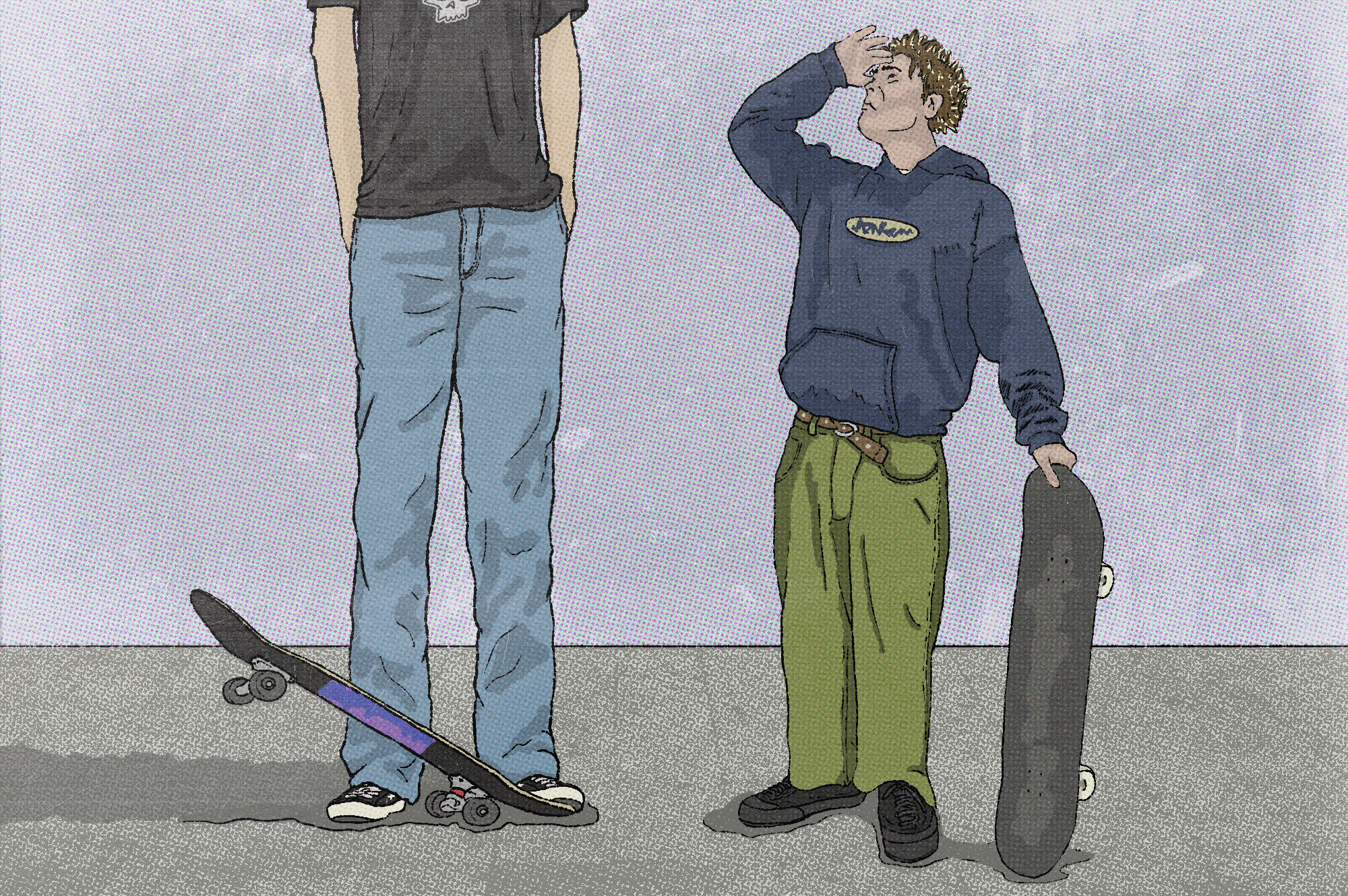
I’m about as average of a guy as could be. I’m 5’7, wear a size 9 shoe, size 32 pants, and medium T-shirts. Despite being as run of the mill as it gets, I still feel like taller people have an advantage over me in most things.
That being said, I do have a feeling that skateboarding may be an exception.
As someone with a low center of gravity and what I would describe as a “semi-athletic build,” I generally feel like I don’t have to worry about serious injury while skating.
For bigger skaters, the old adage “the bigger they are, the harder they fall” comes into play. That makes me think that if you’re a taller or heavier set person, then skateboarding may be a bit scarier and possibly more difficult as well.
Rather than relying on my own intuitions, I decided to get a more informed answer to an age-old question: “Does size matter?” I hit up physical therapist Dr. Kyle Brown, who works with some top tier skateboarders, for some insight on whether or not our physical size plays a noticeable role in how we skate.

Q&A WITH DR. KYLE BROWN
Is there any validity to the claim that skateboarding is harder if you are bigger?
In some ways, yes. If you are a taller, larger skater, it’s going to affect falling, absorbing impact, and balance when doing things like holding a manual. All of those things are going to be a little more challenging if you are a taller skater. It’s not a deal breaker being a taller skater, but if you put two 18-year-old skaters in front of me, and one was 6’3 and the other was 5’7 and you forced me to predict who will become SOTY out of those two, I’d probably choose the 5’7 skater.
But that being said, although it might be harder and more demanding on the body to be taller, if you look at the SOTY list over the past 30 years, there is a surprisingly large number of skaters over 6 feet. In my opinion, that comes down to style. I think we’ve decided that the taller skater tends to be more aesthetically pleasing to watch skate. Brian Anderson, Andrew Reynolds, guys like that.
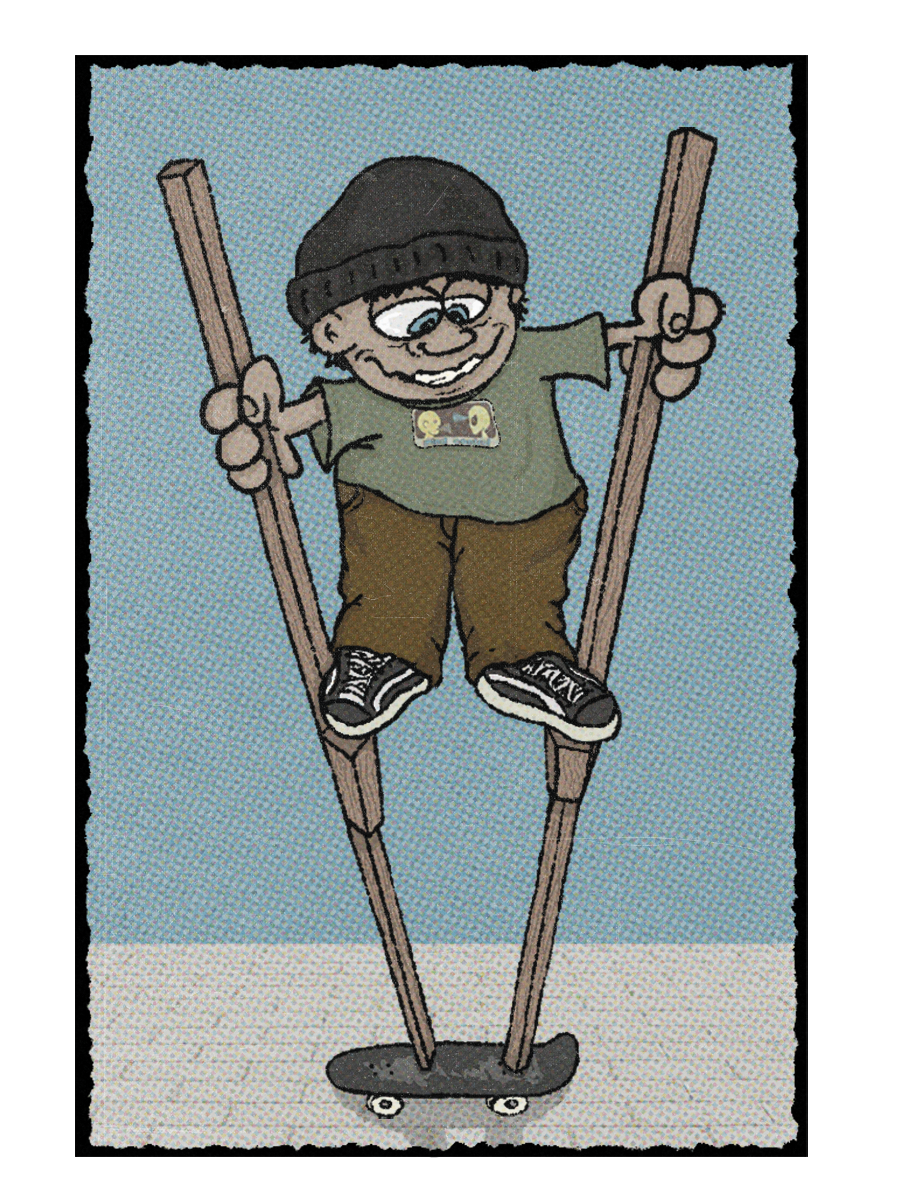
Are smaller skater body types more “optimal” in any way?
It’s always tripped me out going to a video premiere. I’m always endlessly surprised at how much shorter most of the pros are in person who I’ve only seen on video. I swear the VX + death lens adds six inches to every skater’s height.
While there is no ‘optimal’ height for skating, shorter and lighter skaters might have some slight advantages.
Falling: The taller you are, the harder you fall, and that can have consequences with injury. Also, in my opinion, the most ideal way to fall when jumping down big stuff is the “tuck and roll” type of fall. If you are shorter with some good flexibility, the tuck and roll is a little easier.
Absorbing impact: The longer your lower limbs are the more stress there is on the body when you’re absorbing impact. This has repercussions mostly when jumping off of bigger stuff. From an injury point of view, you really want to land in a good deep squat to avoid injury. If you land stiff-legged, you set yourself up for all sorts of problems, from overuse injuries to blowing out your knee and tearing your ACL. If you’re taller, it takes a bit more strength to properly absorb that impact.
Balance: There’s a lot that goes into holding a manual or a long slide or grind, but in general, if you’re a little shorter, it’s easier for your trunk and core to balance and hold a manual for longer periods of time. The tall, lanky skaters might have a tougher time doing that, especially if it’s some sort of 180 into a manual that you have to hold.
Just picture someone with a Daewon Song-type frame doing some sort of rotational trick into a manual and holding it and compare that to someone with a Brian Anderson frame doing that same trick. It’s going to be a little more feasible for the Daewon frame. Not saying the BA-type frame couldn’t do it, but they might have to work for it a little more.
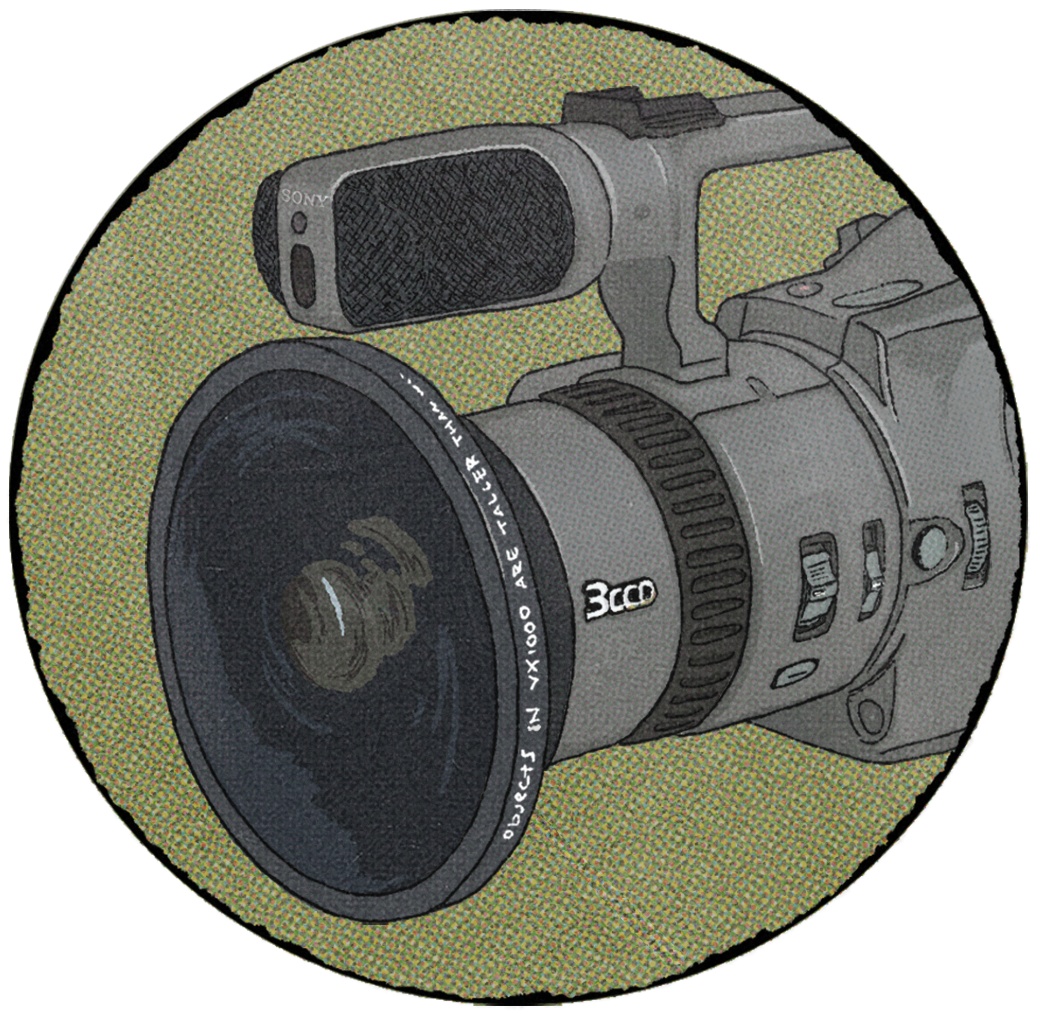
Can you expand on what the “tuck and roll” falling technique is?
It’s just in my opinion the best way to absorb impact. It can apply to all types of skating, but it’s most consistently useful when you’re skating bigger stuff. When you’re jumping off of something substantial, you want to lessen the blow to the ankles, knees, hips, back, etc. as much as possible. Any way that you can land and then kind of curl up into a ball and then fall to the ground will help do that. The opposite would be landing stiff-legged and then not actually rolling to the ground.
Picture jumping off of a 10 stair, and then picture landing in a stiff mini squat and then running out of the trick after that, not even falling to the ground. That kills my knees just thinking about it. But if you also picture doing a proper tuck and roll bailing from the 10 stair, if done well, it should make the bail seem a little more survivable. Yes, you have to roll on the ground, but way easier on the joints overall.
Skating is very reactionary and random, so it’s hard to train something like this, but it is something that you can train a little bit. However, for the taller body types, it’s harder to get into that proper tuck and roll position and have it be actually beneficial for falling successfully.
“I’d bet that the shorter skater would have a slight advantage over the taller skater as far as injury and longevity.”
Have you noticed anything consistent in the body types of “successful” skaters?
That’s a tough one to answer. There are just so many things to consider when you’re thinking about why someone does or doesn’t get injured besides body type: how strong and fit are they? What type of stuff do they skate? How often are they skating? What’s their nutrition like? How much sleep are they getting? What’s their mental health like? All these things play a role in injuries and longevity.
But that being said, let’s say all of those things are really solid, and let’s also say we’re talking about the type of skater who’s jumping down/off/over bigger stuff. I’d bet that the shorter skater would have a slight advantage over the taller skater as far as injury and longevity.
I think for the taller skater, it’s a matter of keeping the body in decent shape strength, and flexibility-wise. But also, the taller skater might need to adapt and skate different stuff if they want to be successful. That’s one of the things I love about skating, there are many different ways to be good.
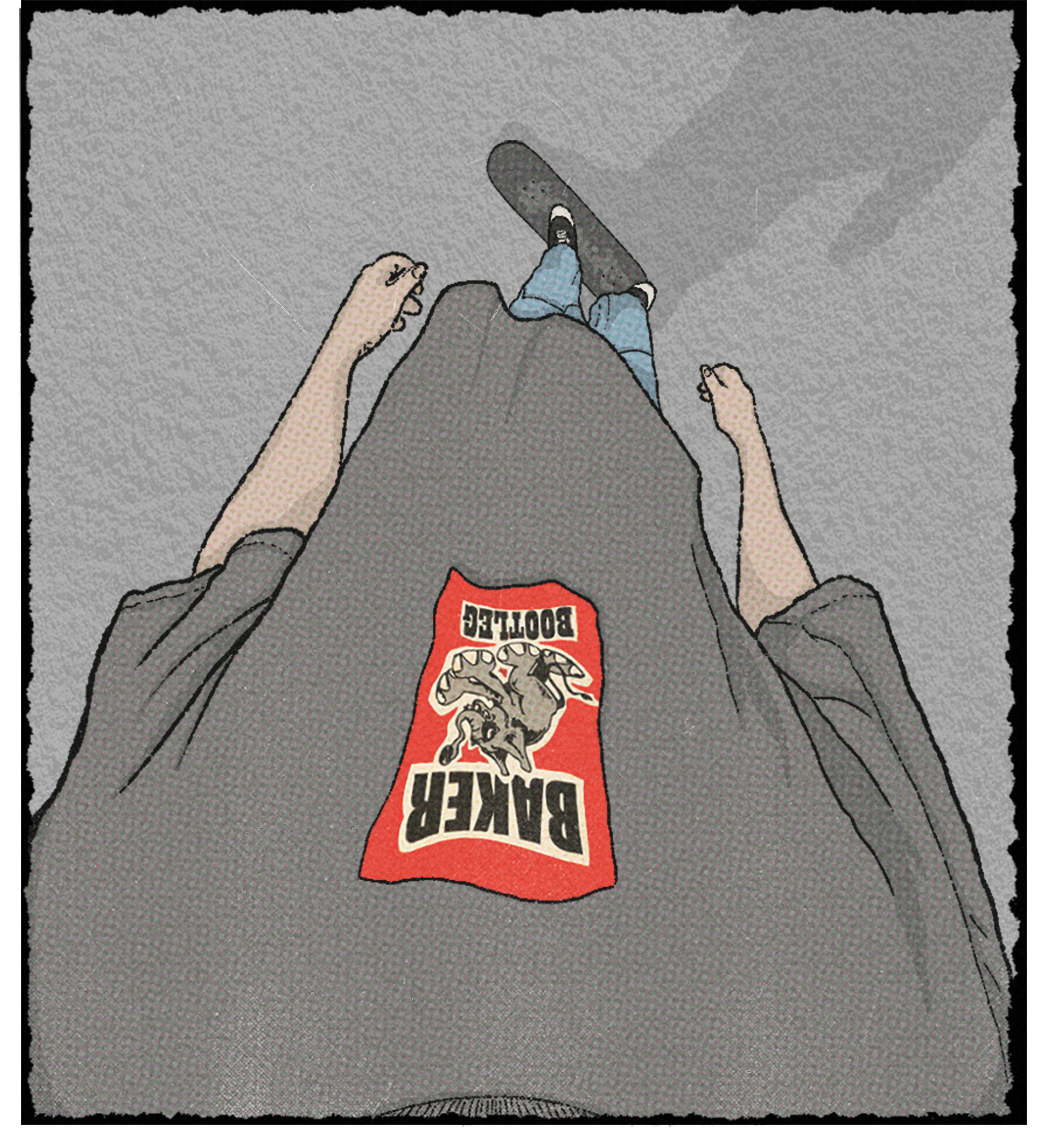
Who is the tallest skater you’ve worked with personally? What injuries did they have that could be directly related to their size, and how did you treat them?
The tallest skater I’ve treated was 6’4”, 280 lbs. He had knee issues in both knees, a hip issue on one side, and Achilles tendon pain. We got him back skating after a few months. He really had to work hard though. He was already a strong dude but had to get extra strong and durable so his body could tolerate the demands of skating. It was a lot of good old-fashioned strength training and some plyometric training as well, and then we had to make sure that he gradually got back on the board, instead of doing too much too soon.
“After that initial spring, you need to suck those knees up towards your chest as far as you can to really get that extra height.”
What physical and anatomical factors affect pop the most? Is it like basketball where taller people are naturally able to jump higher?
You need to have that explosive power to get that initial spring when you’re popping, so the taller basketball player that can jump out of the gym would have an advantage for one aspect of pop. But there’s another unique component to pop and that’s the “tucking” aspect. After that initial spring, you need to suck those knees up towards your chest as far as you can to really get that extra height. That takes some component of strength but also requires flexibility.
If you’re naturally tall and athletic like a basketball player, you might have an advantage with one part of popping, but if you can’t master the tucking part, then you might be limited at some point in how high you can get on a certain trick. But on the other hand, if you think of someone like Kenny Reed, he probably can’t jump all that high when trying to dunk a basketball, but when skating he can pop over everything you put in front of him because he has the TUCK part down. He can really suck those legs up to his chest and clear an object he’s trying to pop over successfully.

Does size affect the quickness to pop and land a trick? In other words, do shorter skaters have the quickest feet naturally?
The short answer to that is an unsatisfying one: MAYBE, and, IT DEPENDS. You can be tall and quick, and you can be short and quick, and both of those things could give you advantages in certain situations.
If you’re tall and quick, you might have an advantage with a clip like this where you have to ollie up something then quickly jump over or up to something tall after that, but if you’re a shorter skater with quick feet you COULD have a slight advantage with a clip like this.
“There is no perfect or ideal body type for skaters. Skating is the best because you can figure out a way to be good with the body you have.”
What weight and muscle distribution is most ideal for skaters?
Strong and light, that’s the money combo I’d say. Specifically strong legs and a strong core.
I want to be clear, there is no perfect or ideal body type for skaters and skating is the best because you can figure out a way to be good with the body you have, but I’d say those two ingredients are pretty important for your performance as a skater.
What professional athletes are most similar to pro skaters in terms of average build and physique?
Golfers? [Laughs] I say that jokingly because golfers back in the day were like skaters and didn’t take care of their bodies and would do things like smoke cigarettes while playing in professional tournaments. But golfers and skaters are starting to be better at keeping their bodies in shape, so I can’t say that anymore.
It’s really hard to compare skating to any other sport because skating is so unique, but if I had to choose, I’d probably say soccer players would generally do the best with skating with their build and physique.
Related Posts
Comments
Popular
-
 RECONTEXTUALIZING ZAK ANDERS, ONE OF TODAY’S MOST MYSTIFYING SKATERS
RECONTEXTUALIZING ZAK ANDERS, ONE OF TODAY’S MOST MYSTIFYING SKATERS
"I don’t want to be this brutal punk that hates everything that people like, and I’m trying really hard to undo that."
-
 RARELY SEEN PHOTOS FROM READ AND DESTROY, THE BELOVED BRITISH SKATE MAG
RARELY SEEN PHOTOS FROM READ AND DESTROY, THE BELOVED BRITISH SKATE MAG
Check out early documentation of London's Southbank, vert ramps tucked into Lord of the Rings-level forests, and everything in between.
-
 NAVIGATING SKATING’S HIGHS AND LOWS WITH MATT MILITANO
NAVIGATING SKATING’S HIGHS AND LOWS WITH MATT MILITANO
Over coffee and cigarettes Matt talks prank shows, ABDs and his love for the VX.
-
 A CHAT WITH LUDVIG HAKANSSON, THE OLDEST SOUL IN SKATEBOARDING
A CHAT WITH LUDVIG HAKANSSON, THE OLDEST SOUL IN SKATEBOARDING
The man loves to read Nietzche, skates in some expensive vintage gear, and paints in his own neoclassical-meets-abstract-expressionist style.
-
 MEET THE SEATTLE ARTIST WHO DESIGNED A BACON ’N EGGS INSPIRED SKATEPARK
MEET THE SEATTLE ARTIST WHO DESIGNED A BACON ’N EGGS INSPIRED SKATEPARK
Breakfast-obsessed skaters rejoice!


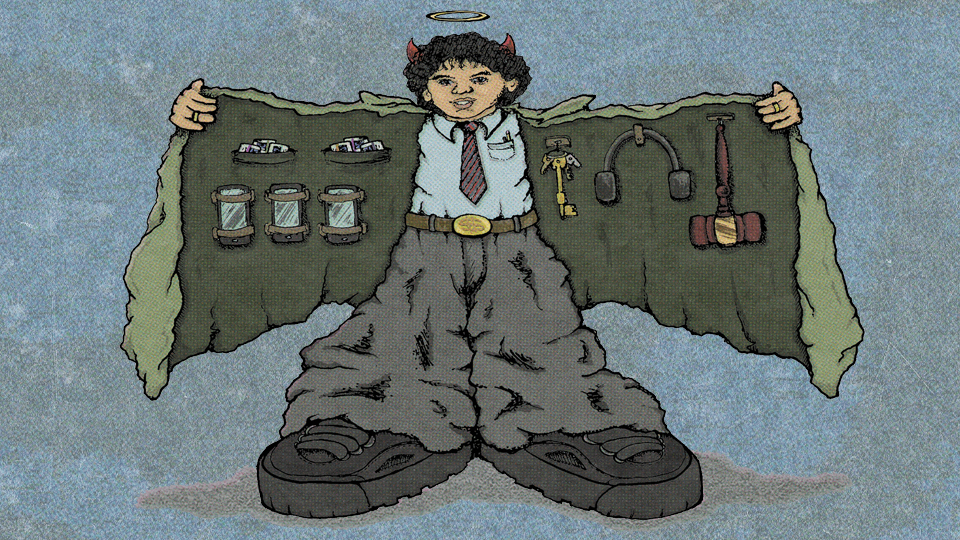
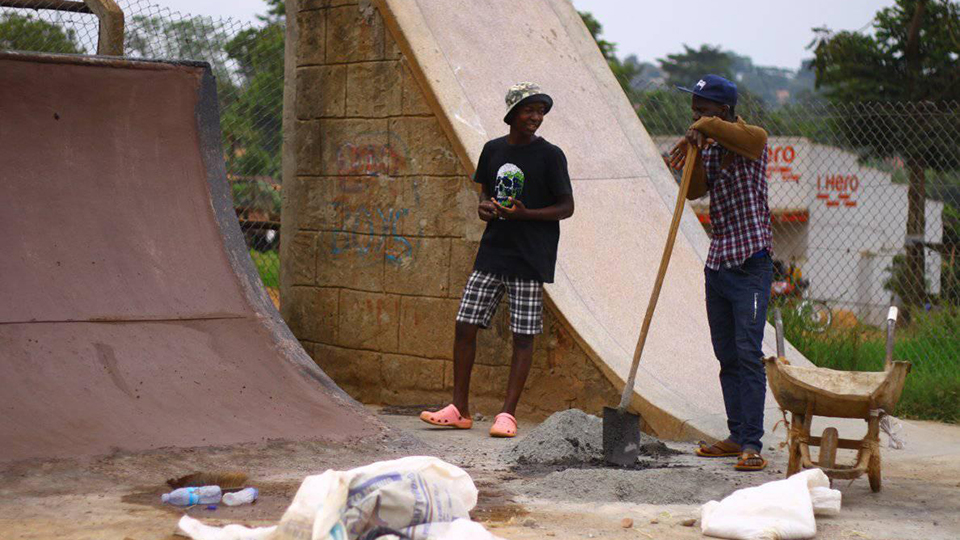

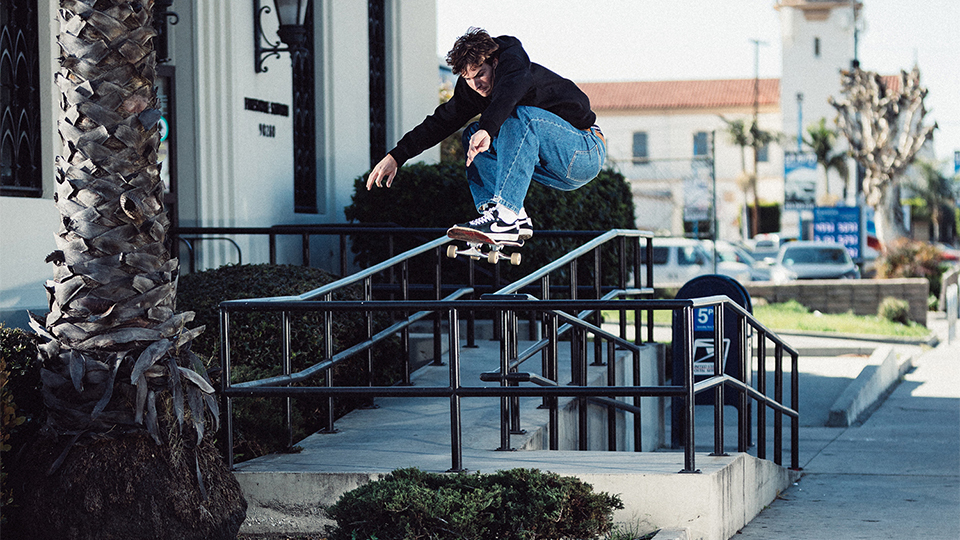
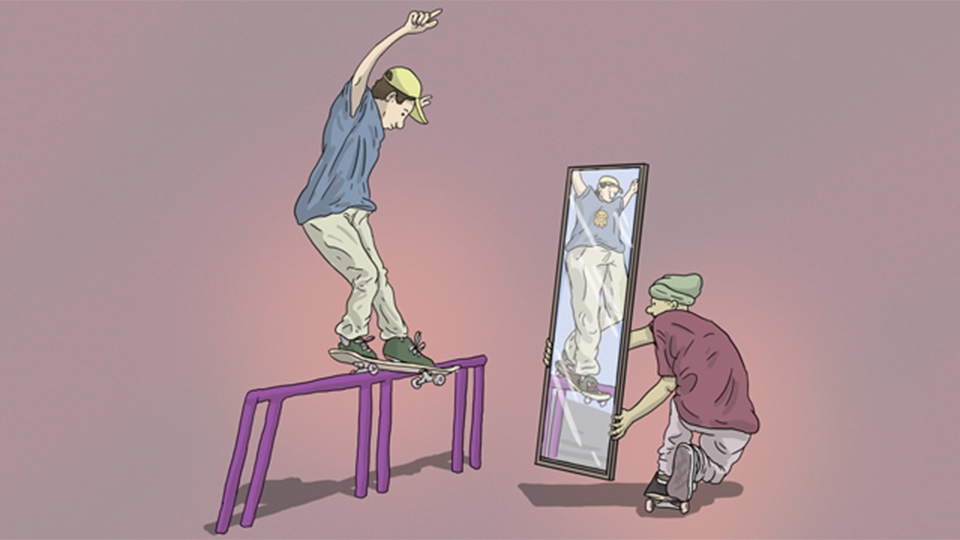
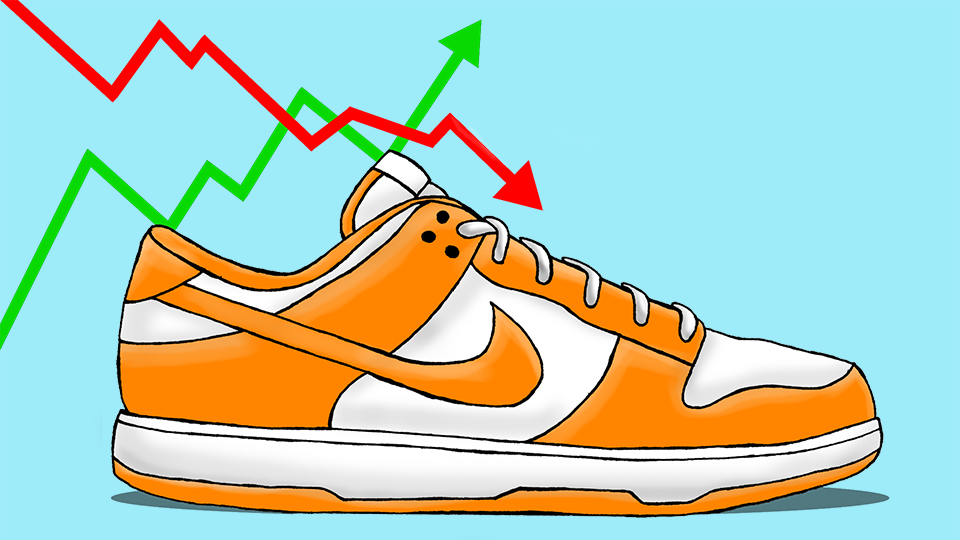

June 1, 2023 6:40 pm
It’s ok to say fat, we’re skaters
June 8, 2023 12:24 pm
Skating woke now Brodie
June 2, 2023 6:23 am
My shoe size determined by a Brannock is 13.75AA. I wear size 13 or 14 shoes and skate a Bauer Supreme 11.5 Fit 1, which is what the Bauer foot scan recommended for me. CCM’s tapered fit didn’t match my foot as well. I used to be able to get skates that fit length-wise, but the variable width/volume sizing has been a significant improvement for me. My current skates (Supreme M5 Pro) are by far the best-fitting that I have had, and they fit like a glove. Toes barely brush the end of the toecap.
I lace them fairly tightly to the top eyelet but still have good forward flex and can comfortably get my knees over my toes with my skate blade flat on the ice. No negative space in the boot after heat molding and the first few skates to finish shaping the foams in the ankle. No pressure points. No rubbing or hot spots. I’ve been in them since July, so I now have about 40-50 hours in them after a mellow late summer. They fit perfectly with zero break-down or change in fit after the initial few hours of break-in. I do use superfeet carbon insoles because my arches are high enough that I need the extra support – and superfeet fit me very well. I previously tried the Currex insoles, but those don’t work very well for me.
follow me on instagram @qamaristarks
June 4, 2023 7:42 am
Nah
August 14, 2023 1:16 am
tbh
June 3, 2023 3:51 am
Would be interested in Kyle view on board length in relation to length of a person. Should taller skaters skate longer / bigger boards?
June 4, 2023 3:52 pm
You want the best person to turn into a skater start with dancers. Balance, foot speed, muscle control and precision, full body conditioning…skateboarding is just ballet in baggy jeans. But good luck getting skaters to go to a ballet class, they’d rather be set on fire.
August 14, 2023 1:17 am
id be so sexy in a tutu